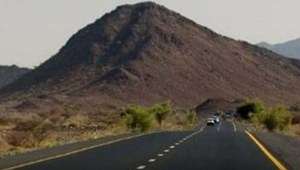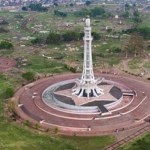Dubai: Average sales rates across Dubai are predicted to continue falling after Eid, according to property analysts. Rates are expected to see a fall of 10 to 15 per cent across Dubai during the remainder of this year, according to Matthew Green, head of research and consultancy at CBRE. “However, we have to consider the fractional nature of the market as it stands, where individual developments and properties are seeing price movement as opposed to the whole shifting in tandem, as was starkly apparent during the peak,” Green said. However, according to Vineet Kumar, head of business development at Asteco Property Management, prices have stabilised and are predicted to do better in the remaining part of the year.
In the second quarter, approximately 2,000 units were completed, bringing the total residential stock to around 322,000 units, according to Jones Lang LaSalle. Around 19,000 new residential units are expected to be completed by the end of the year, CBRE said. Much of the upcoming pipeline has been pre-sold to investors and the majority of accommodation will return as either leasing product or through the secondary sales market. While upcoming supply is predicted to push down average sales and rental performance, rates are dependent on the individual development. Community developments that are well managed and provide quality facilities and amenities will continue to outperform the market and attract the lion’s share of demand.
Modest growth: Sales prices for Palm villas have seen some modest increase between 2010 and 2011 and this trend is expected to continue for now with no significant new supply to be delivered over the next 12 months. Other prime villa locations such as Emirates Hills and the wider Emirates Living Community are also expected to perform well. Rents for apartments on Shaikh Zayed Road and villas in Jumeirah and Um Suqueim have remained sturdy after the correction which took place last year, Kumar said. On the other hand, new freehold locations are seeing the steepest declines, largely as a result of the huge new housing supply that has emerged during a short time period and the lack of complimentary infrastructure and community facilities, Green said.
Areas such as Dubai Silicon Oasis and Discovery Gardens have seen rates drop sharply over the course of the year. In the case of Discovery Gardens, high service charges and district cooling fees have been prompting people to move out. “We will also see hand-over of units in areas such as Dubai Biotech, IMPZ and Dubai Investment Park — locations like this are not very high on the buyer’s wish list. Also, the apartments in International City as well as some upcoming residential projects in Dubailand are likely to be effected,” said Kumar.
New supply : Some of the older areas in Dubai such as Bur Dubai have also seen a fall in sales and rents during the first three quarters. The impact of new supply in less congested areas has seen landlords struggle to maintain their rates as residents have relocated to newer properties on more attractive terms. “Rents in certain sub-markets have already reached a point of some stability, although the market has become very fractional with the handover of new products still applying deflationary pressures to areas of weak demand and oversupply. The more developed sub-markets such as Downtown, Dubai Marina and Emirates Living are portraying relative solidity in lease rates.
This is result of higher tenant demand as occupiers continue to seek out community focused developments,” said Green. New supply expected includes Nakheel’s Jumeirah Park and Al Furjan which are up for handover by the end of this year. Also, Damac has Park Towers in DIFC, which is planned to be handed over this year, as well as many projects by private developers who have buildings in Business Bay set for a 2011 handover date. The extended property visa which was announced last June has yet to have a impact on the market.
Fears of crisis : “This can be attributed in part to the timing of the announcement shortly before the onset of the traditionally quiet summer and Ramadan period. The visa change has also been followed by a barrage of negativity from the US and Europe which has only acted to further stifle the investment market amidst fears of another liquidity crisis looming on the back of European debt fears,” said Green.
The factors that will continue to stop positive investor confidence are continued market uncertainties, an overhang of residential supply, high service charges and unattractive finance offers. “Overall demand is still outweighed by existing supply and this situation is unlikely to change in the short term with the current economic environment not generating sufficient new jobs to impact prevailing high vacancy rates. The impact of the new three-year residency visa has yet to be fully felt, and we would anticipate that the fourth quarter is likely to be a little more active than a very subdued third quarter in this regard,” said Green. Plenty of options : 322,000: units is the total residential stock in Dubai. 2,000: units completed in the second quarter of this year. 19,000: new units expected to be completed by the year end.








